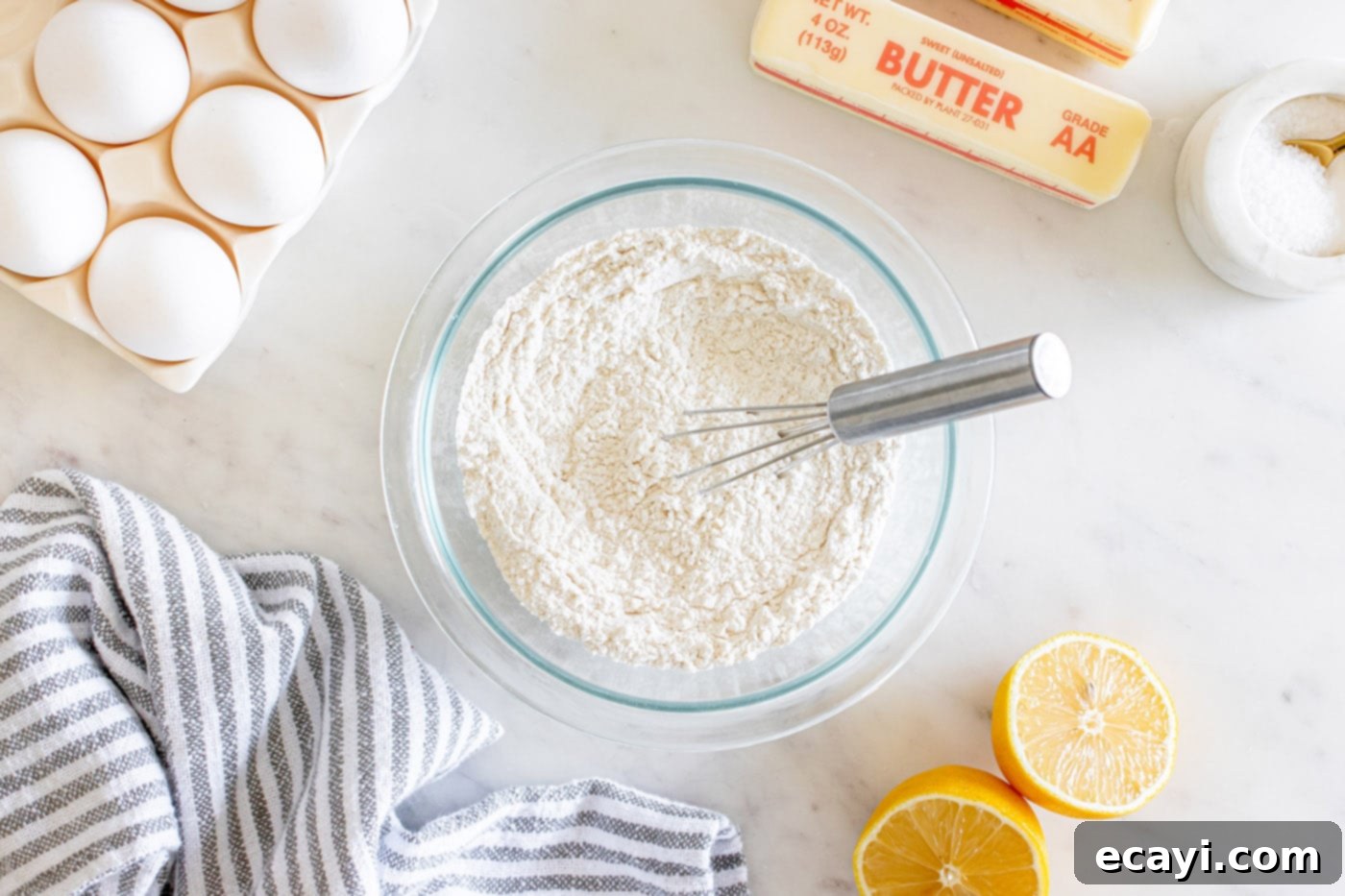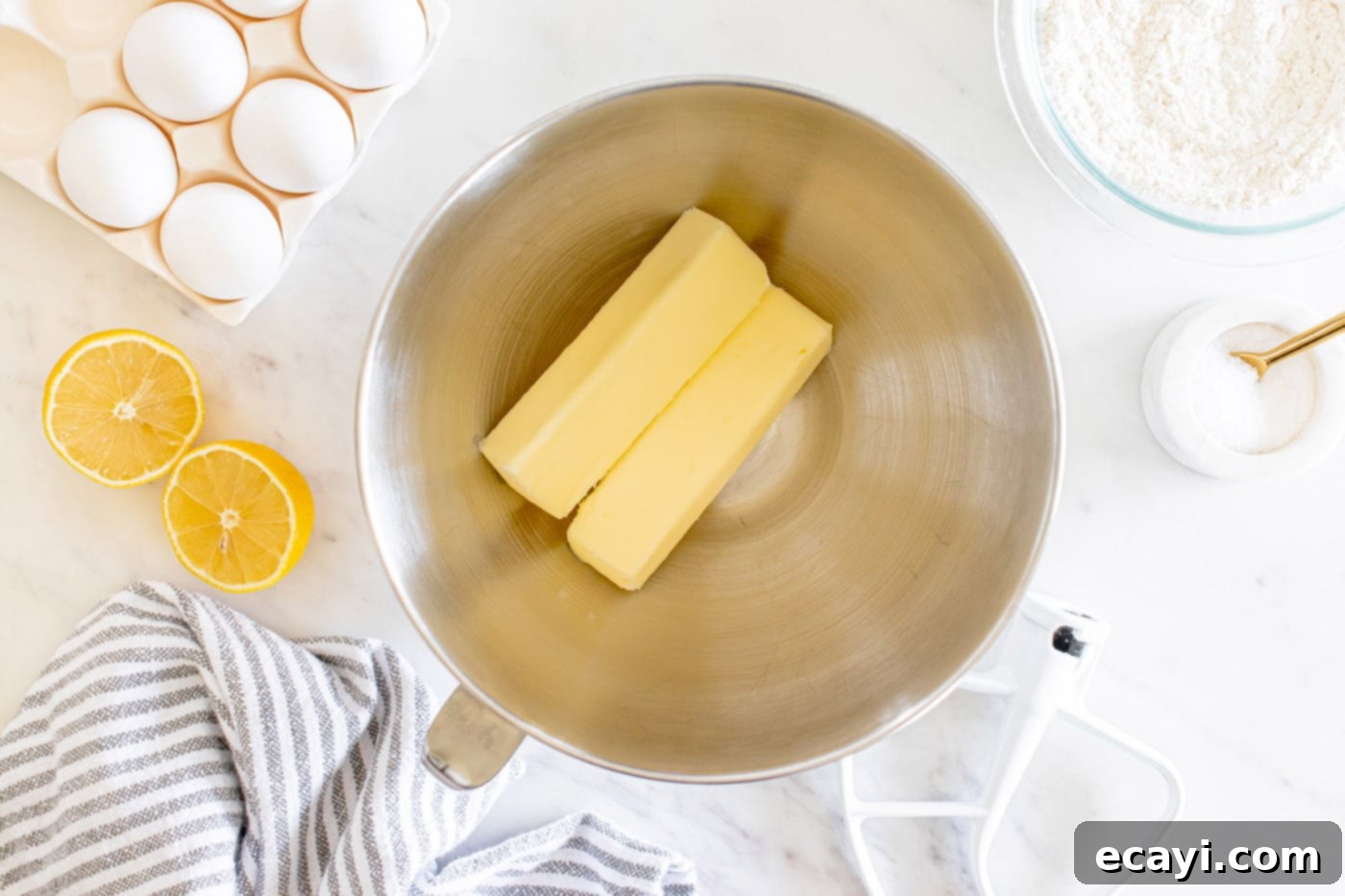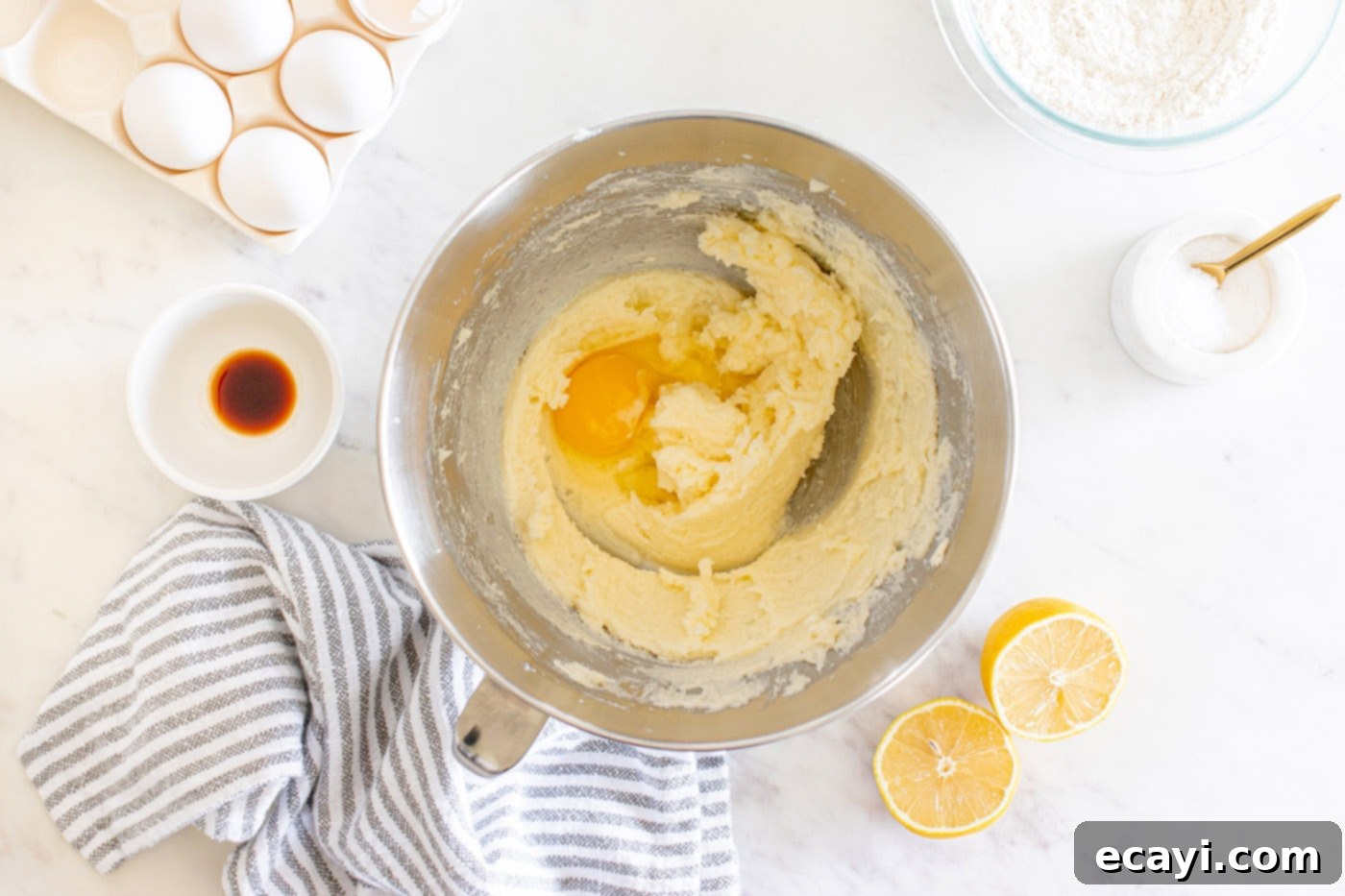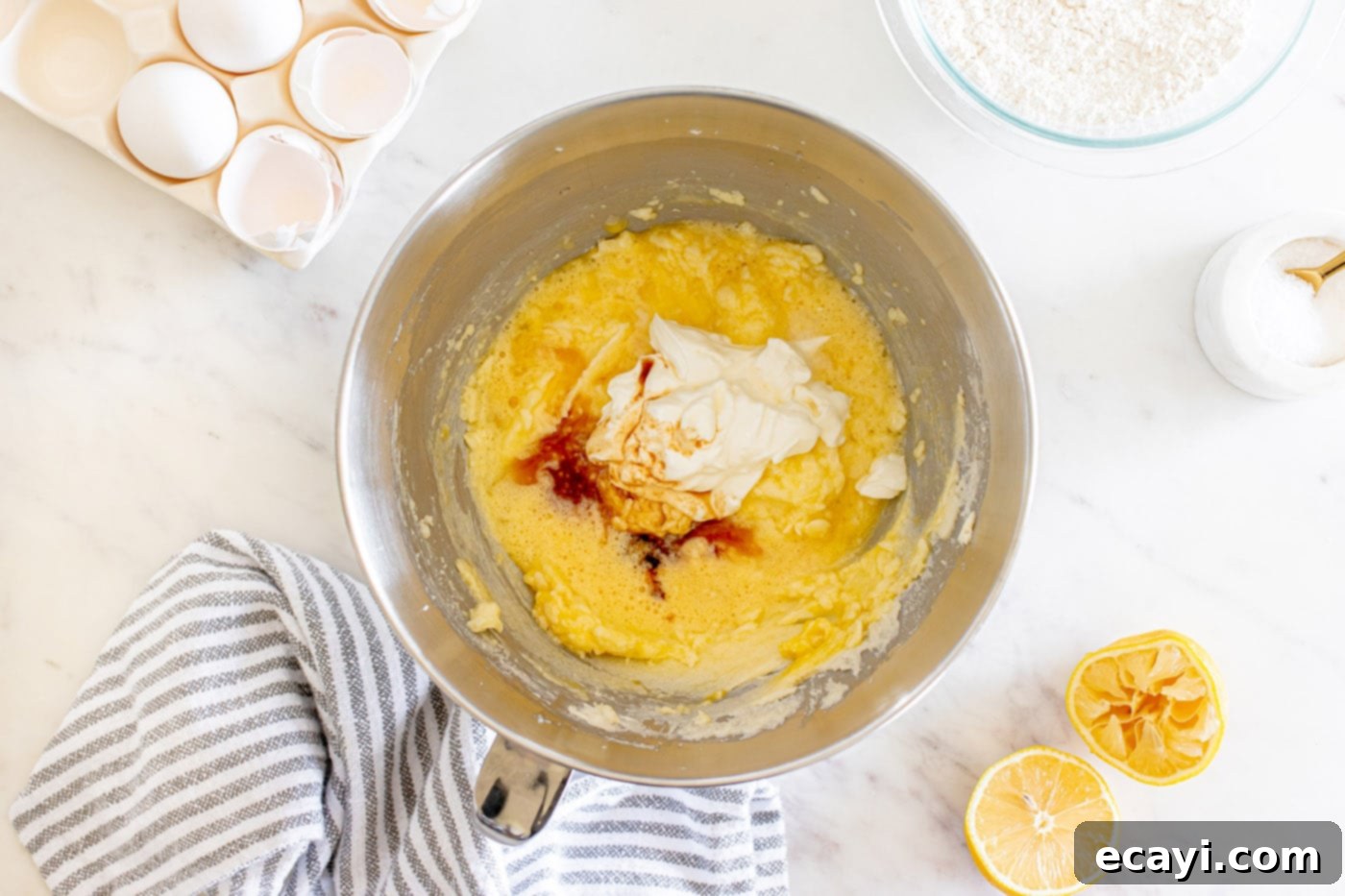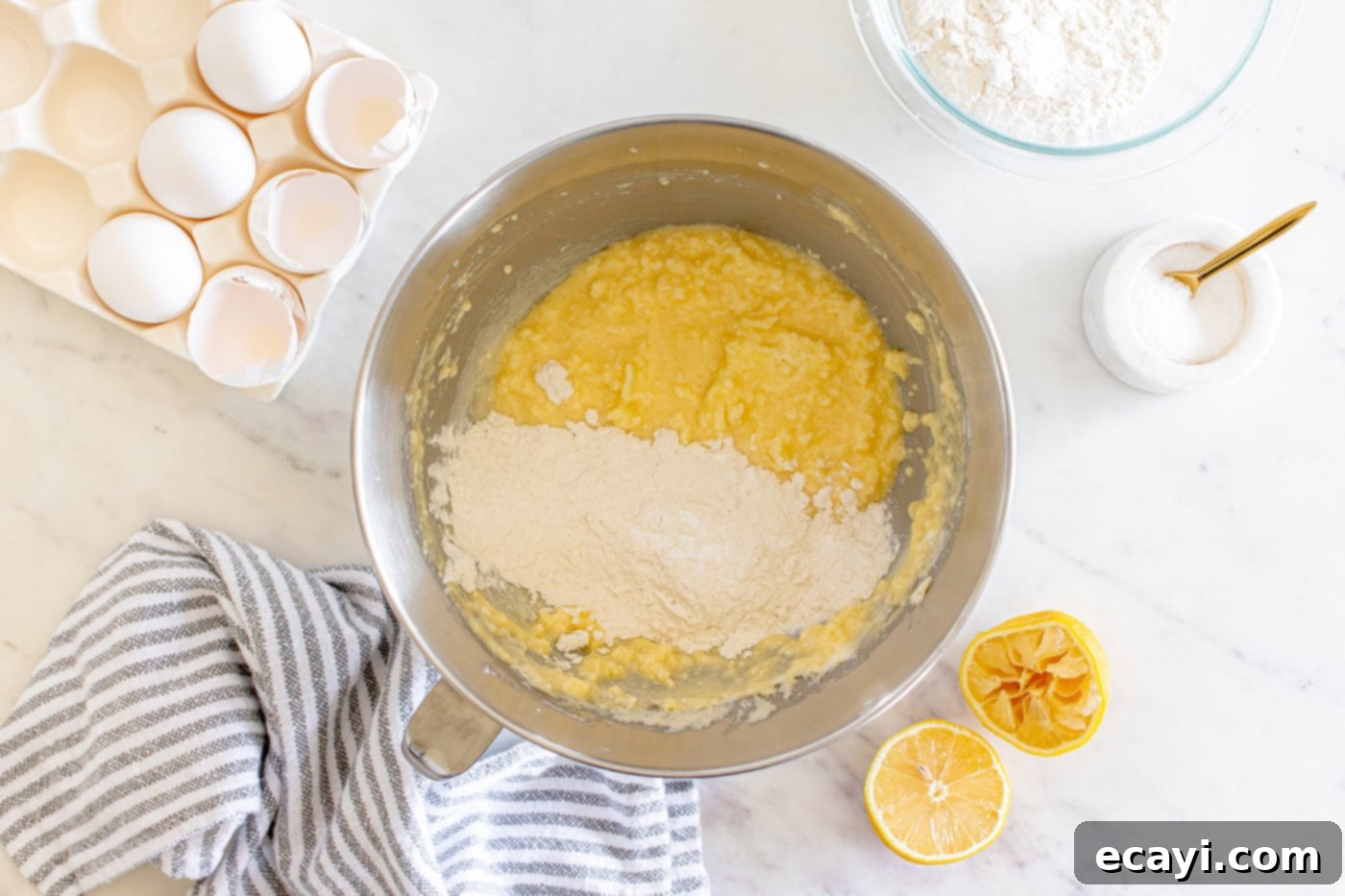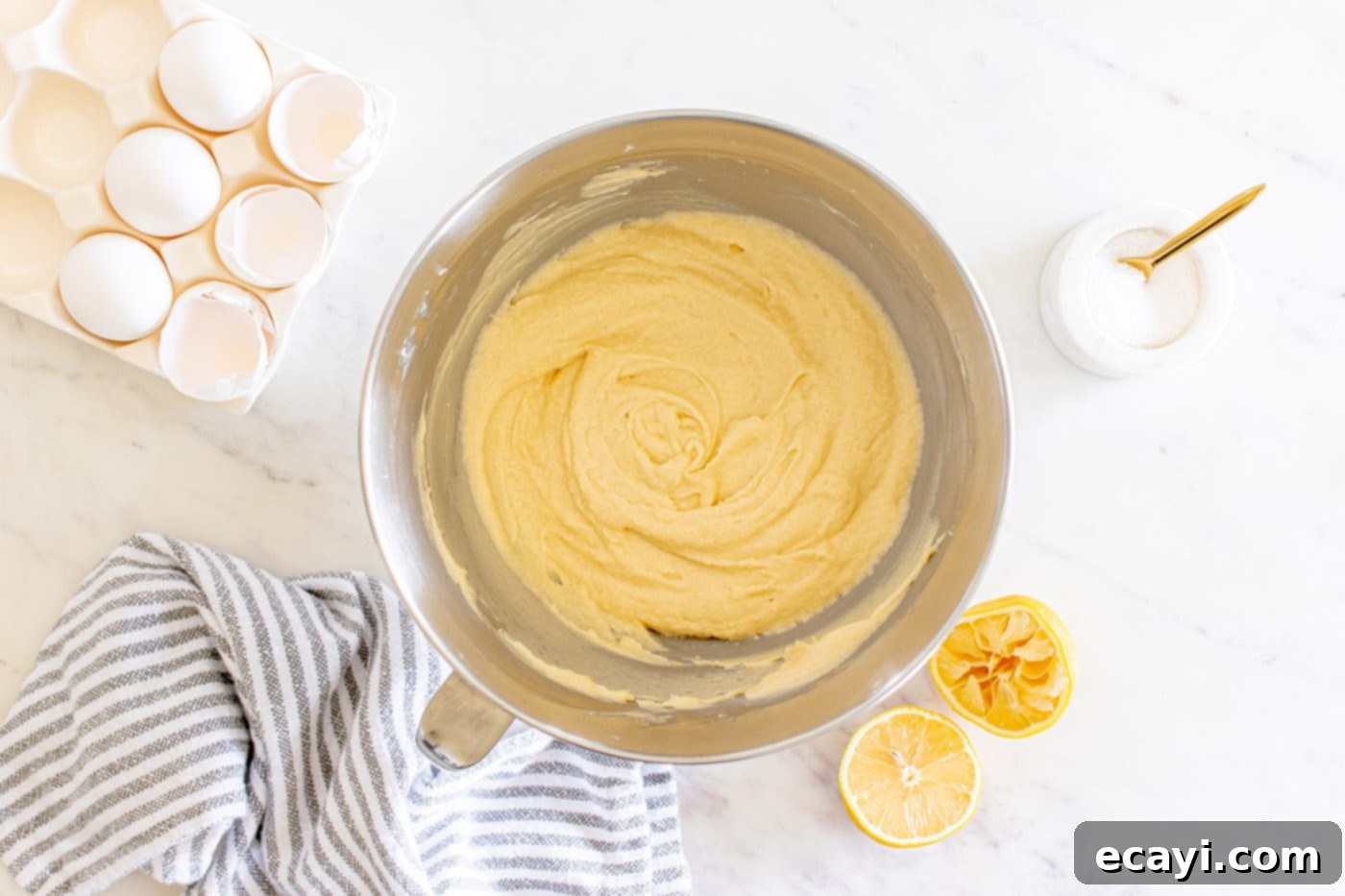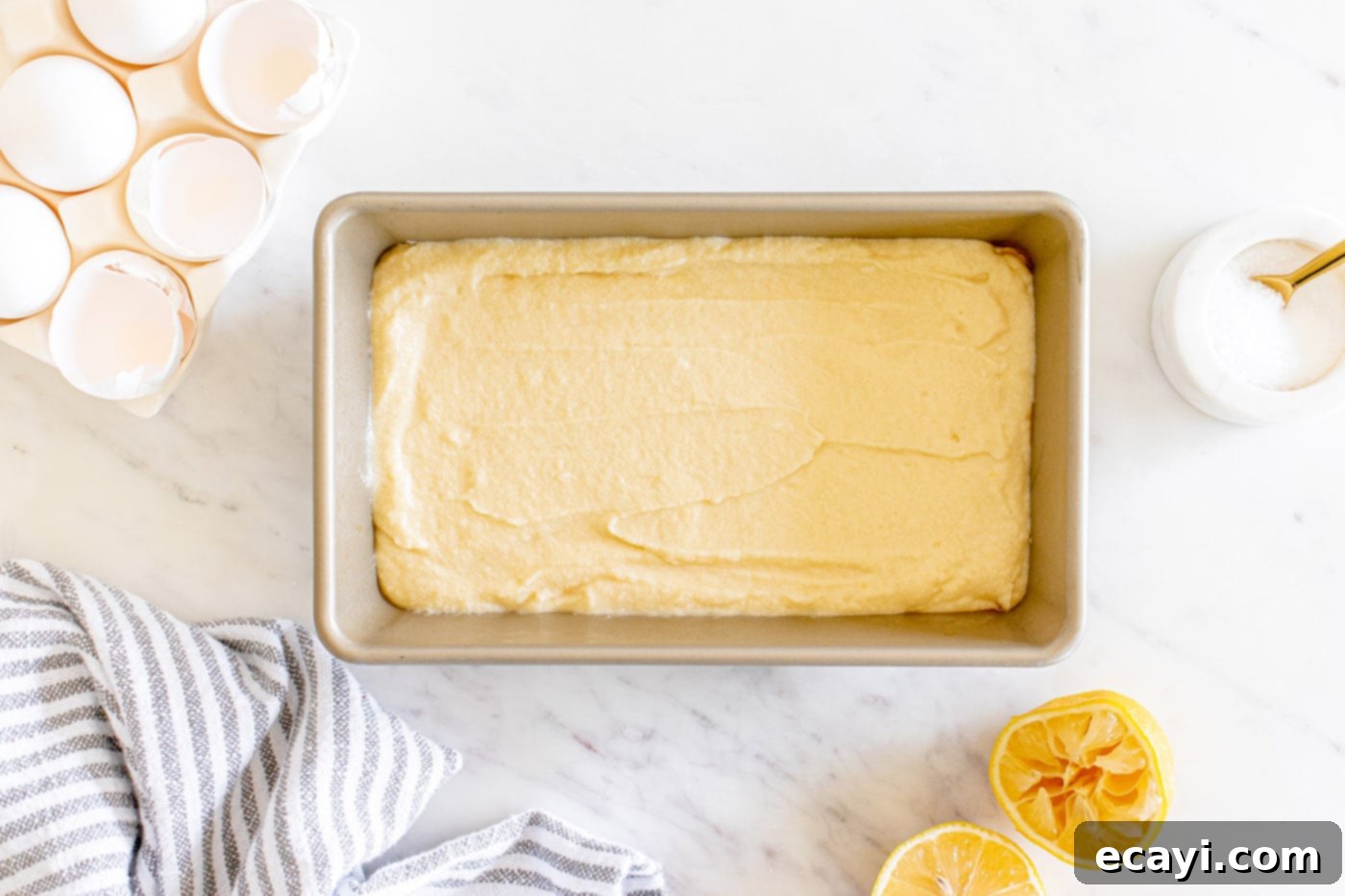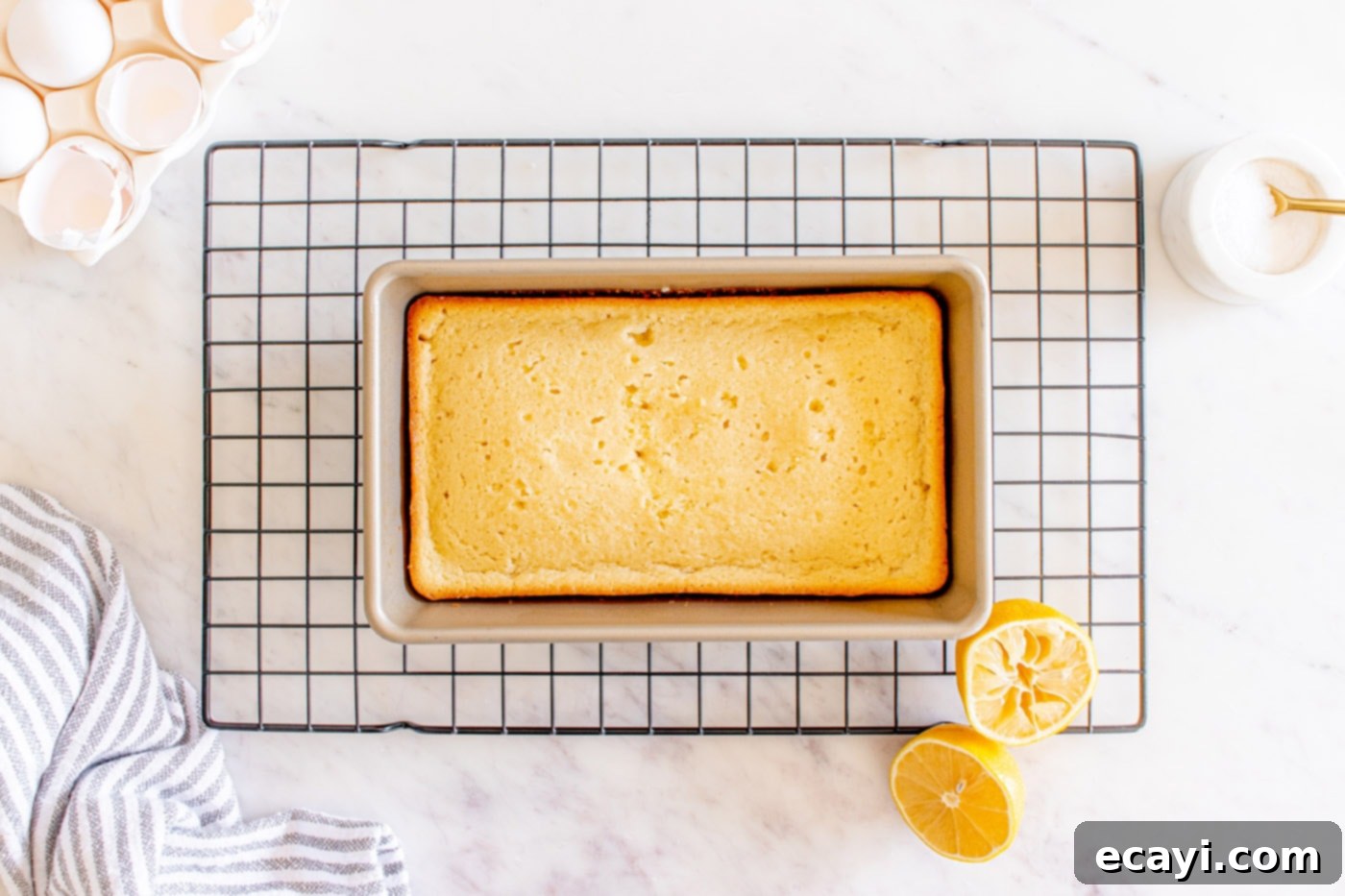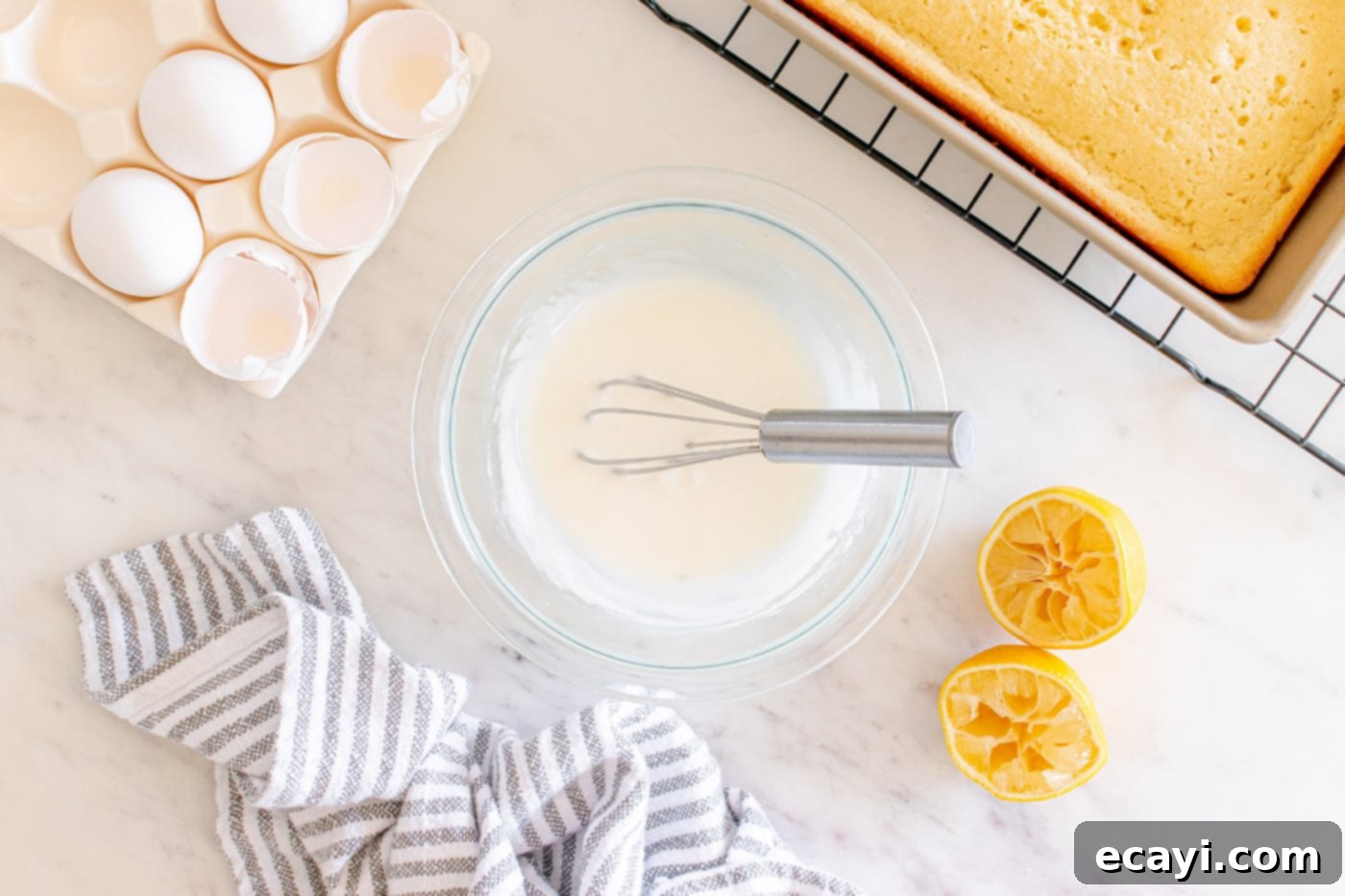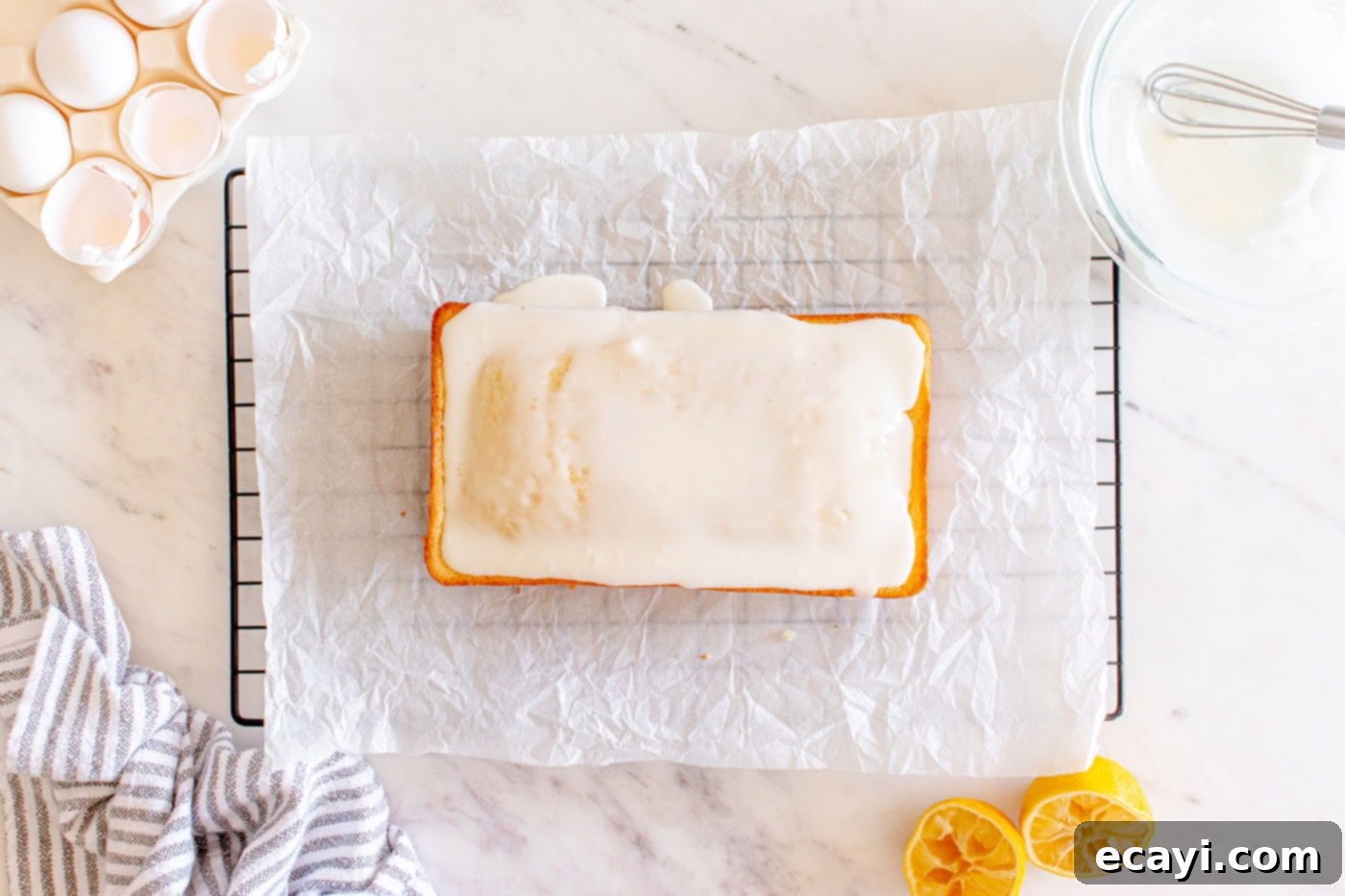The Ultimate Homemade Lemon Pound Cake: Perfectly Moist, Zesty & Easy to Bake
There are few desserts as universally adored and refreshingly delicious as a classic lemon pound cake. This recipe delivers an exceptionally moist and tender crumb, infused with a vibrant burst of citrus flavor that instantly brightens any day. Each slice is crowned with a harmonious lemon glaze, adding a delicate sweetness and an irresistible summery tang that makes this homemade lemon loaf pure bliss. It’s the kind of cake that evokes warm memories and leaves you craving just one more bite.

Why This Lemon Pound Cake Recipe is a Must-Try
If life hands you lemons, skip the lemonade and make this incredible lemon pound cake! This recipe stands out because it guarantees a loaf that is not just soft and moist, but absolutely packed with authentic, bright citrus flavor from both lemon juice and zest. Unlike some recipes that can yield a dry or bland cake, our method ensures a lusciously tender texture every time, further enhanced by a subtle yet rich lemon glaze. This isn’t just a dessert; it’s a versatile treat that’s perfect as a sweet snack, a delightful breakfast accompaniment with your morning coffee or tea, or an elegant ending to any meal.
Lemon is truly a star in the world of baking, and it’s our absolute favorite citrus to work with. From vibrant lemon cakes and chewy lemon brownies to comforting lemon loaves, the possibilities are endless. The fresh juice provides a crisp, tangy freshness, while the zest delivers that intense, aromatic lemony “zing” that we simply can’t get enough of. This particular lemon pound cake recipe is designed for ease, coming together with straightforward steps and simple ingredients, making it accessible for bakers of all skill levels. With our quick tips, you’ll achieve bakery-quality results right in your own kitchen.

Essential Ingredients for Your Zesty Lemon Loaf
Crafting the perfect lemon pound cake starts with high-quality ingredients. You’ll find a complete list of all measurements, quantities, and detailed instructions in the printable recipe version at the very end of this post. For now, let’s dive into the key components that make this cake so special.
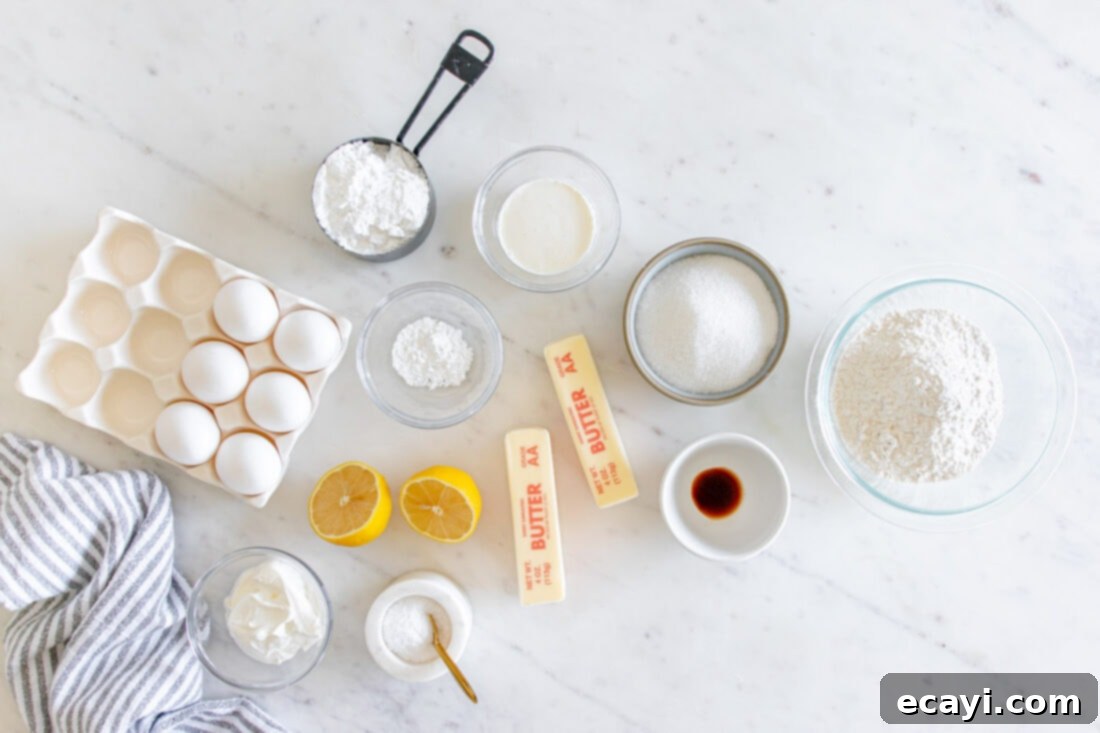
Ingredient Spotlight & Expert Substitution Tips
Understanding each ingredient’s role is key to baking success. Here’s what you need to know:
FLOUR – Accurate flour measurement is paramount in baking, especially for cakes that rely on a specific crumb structure. To prevent a dense or dry lemon pound cake, always use the “scoop and sweep” method. First, aerate your all-purpose flour by stirring it gently with a spoon. Then, lightly spoon the flour into your dry measuring cup until it’s slightly overflowing. Finally, use the flat edge of a butter knife or similar straight tool to gently sweep across the top, leveling the flour precisely. Avoid scooping flour directly from the bag, as this compacts it, leading to excessive flour in your recipe. Similarly, do not tap the measuring cup, as this also packs the flour down. These common mistakes are often the main culprits behind dry, dense, or crumbly baked goods – and we definitely want a light, tender lemon pound cake!
LEMON – The star of the show! You’ll typically need two whole, fresh lemons for this recipe to get both the required zest and juice. It’s often a good idea to grab three, just in case one lemon doesn’t yield as much juice as anticipated. Using fresh lemons is non-negotiable for the best flavor; bottled lemon juice simply won’t provide the same vibrant, authentic taste. For effortless zesting, a microplane grater is highly recommended, as it removes only the flavorful yellow zest, leaving the bitter white pith behind. A handheld lemon squeezer will extract every last drop of juice efficiently. For an even more intense lemon flavor, you can consider substituting the vanilla extract with lemon extract, though vanilla complements the citrus beautifully.
EGGS – Ensuring your eggs are at room temperature before you start mixing is a small step that makes a big difference. Room temperature eggs emulsify more easily with the other ingredients, leading to a smoother, more uniform batter and a lighter, airier crumb in the finished pound cake. Cold eggs can cause the batter to curdle, affecting the cake’s texture.
BUTTER – Unsalted butter is preferred as it gives you complete control over the total salt content in your recipe. Like the eggs, your unsalted butter should also be at room temperature. This allows it to cream properly with the sugar, incorporating air and creating a light, fluffy base for your pound cake. To speed up the process of bringing butter to room temperature, slice it into smaller pieces and let it rest on the counter for 30-40 minutes.
SOUR CREAM – This is a secret weapon for an incredibly moist pound cake! Sour cream adds significant moisture and richness, contributing to the cake’s tender texture without making it greasy. Just like the other dairy components, ensure your sour cream is at room temperature before adding it to the batter. This helps it blend seamlessly, preventing a lumpy consistency and ensuring an even distribution of moisture throughout the cake.
ICING – The simple yet elegant glaze perfectly complements the lemon pound cake. It’s made from sifted powdered sugar (sifting prevents lumps), fresh lemon juice for extra tang, and heavy cream for a rich, smooth consistency. If you desire an extra punch of lemony aroma and flavor, feel free to add a teaspoon or two of finely grated lemon zest directly into the icing mixture.
Step-by-Step Guide: Crafting Your Perfect Lemon Pound Cake
These step-by-step photos and detailed instructions are here to help you visualize how to make this delightful lemon pound cake recipe. For your convenience, you can Jump to the Full Recipe Card to get the printable version of this recipe, complete with precise measurements and instructions, located at the bottom of this post.
- Preheat your oven to 350°F (175°C). Prepare an 8×4 inch loaf pan by thoroughly coating it with nonstick cooking spray. Set the prepared pan aside, ready for your batter.
- In a medium-sized mixing bowl, combine the dry ingredients: whisk together the all-purpose flour, baking powder, salt, and 1 tablespoon of fresh lemon zest. Whisk well to ensure everything is evenly distributed. Set this mixture aside.

- Using a stand mixer fitted with a paddle attachment (or a hand mixer), beat the softened room temperature butter on medium speed until it is light and creamy. This should take approximately 1 minute.

- Gradually add the granulated sugar to the creamed butter. Continue to beat the mixture for an additional 2 minutes until it becomes light, fluffy, and well-creamed. Remember to stop and scrape down the sides of the bowl with a rubber spatula as needed to ensure all ingredients are incorporated.
- Reduce the mixer speed to low. Add the room temperature eggs one at a time, ensuring each egg is fully incorporated before adding the next. Once all eggs are mixed in, turn off the mixer.

- Add the room temperature sour cream, vanilla extract, and fresh lemon juice to the batter. Increase the mixer speed to medium and beat until all these wet ingredients are thoroughly combined. Again, scrape down the sides of the bowl as necessary to ensure a smooth, even mixture.

- With the mixer on low speed, slowly add the reserved flour mixture to the wet ingredients. Mix just until the flour is combined and no dry streaks remain. It is crucial to avoid overmixing the batter at this stage, as overworking the gluten can result in a tough and dense pound cake.


- Carefully spoon the prepared lemon pound cake batter into your greased loaf pan, spreading it evenly with a spatula to ensure a uniform bake. Bake for 50-65 minutes, or until a wooden skewer or toothpick inserted into the center of the cake comes out clean.

- Once baked, remove the cake from the oven and let it cool in the pan for about 10-15 minutes. Then, carefully invert the cake onto a wire cooling rack. Allow the lemon pound cake to cool completely to room temperature before applying the icing. This prevents the glaze from melting and ensures it sets beautifully.

- While the cake cools, prepare your irresistible lemon glaze. Add all the icing ingredients – sifted powdered sugar, fresh lemon juice, and heavy cream – to a medium-sized mixing bowl. Whisk vigorously until the mixture is smooth, thick, and has a pourable consistency.

- Once the cake is completely cool, pour the freshly made lemon glaze generously over the top, allowing it to drip down the sides for a rustic yet elegant finish. Let the cake sit undisturbed for approximately 30 minutes to 1 hour to allow the glaze to fully set before slicing. Serve and savor this delightful homemade lemon pound cake!

Frequently Asked Questions & Expert Tips for Success
Proper storage is key to keeping your lemon pound cake fresh and delicious. Once cooled and glazed, leftover lemon pound cake can be stored at room temperature for up to 7 days. Ensure it’s placed in an airtight container or tightly wrapped in plastic wrap to prevent it from drying out and to maintain its delightful moisture and flavor. Placing it on the counter is generally sufficient.
Absolutely! Pound cake freezes exceptionally well, making it perfect for meal prep or enjoying a slice whenever a craving strikes. To freeze, wrap the fully cooled cake (or individual leftover slices) tightly a couple of times in plastic wrap, then place it in an airtight container or a large freezer-safe zip-top bag. This double-layer protection helps prevent freezer burn. It can be frozen for up to 3 months. When you’re ready to enjoy it, simply thaw the cake overnight on your countertop before serving.
Several factors can contribute to a dense or chewy lemon pound cake, but the most common culprits are easy to address. The primary reason for a less-than-perfect crumbly or chewy texture often stems from overmixing the batter, especially after the eggs and flour have been added. Once the dry ingredients are introduced, you only want to mix until they are *just* combined and no streaks of flour remain. Overworking the gluten in the flour develops it too much, leading to a tough cake. Another frequent cause for dense, dry, or crumbly cake is inaccurate flour measurement. As highlighted earlier, it’s incredibly important to properly measure flour using the “scoop and sweep” method to ensure the best possible light and tender outcome.
While this recipe is specifically formulated for the bright flavor of lemons, you can certainly experiment with other citrus fruits! Limes or oranges could be interesting substitutions, but be aware that the flavor profile and acidity will change. Orange pound cake would be sweeter and less tart, while lime pound cake would offer a different kind of tang. You might need to adjust the amount of zest and juice to achieve your desired intensity, and possibly slightly alter the sugar in the cake or glaze depending on the sweetness of the fruit.
A crack on top of your pound cake is actually quite common and nothing to worry about! It often indicates that the outside of the cake is baking faster than the inside. As the center continues to rise, the already set crust on top simply splits to accommodate the expansion. It doesn’t affect the taste or texture of the cake. If you prefer a smoother top, some bakers like to create a shallow trench down the middle of the batter with a knife before baking, which can guide the split. Alternatively, ensuring your oven temperature is accurate (using an oven thermometer) and not too high can sometimes help reduce cracking.

Delightful Serving Suggestions
This lemon pound cake is wonderfully versatile and can be enjoyed in many ways. It makes a simply divine citrusy sweet snack, a satisfying dessert after dinner, or a bright breakfast cake alongside a freshly brewed cup of coffee or a comforting mug of tea. For an extra touch of gourmet flair, feel free to sprinkle a few dashes of fresh lemon zest directly over the wet icing before it sets, or garnish slices with fresh berries like raspberries or blueberries. Serving it at room temperature allows the flavors and textures to shine through perfectly. For an indulgent twist, a dollop of whipped cream or a scoop of vanilla ice cream can elevate this already fantastic cake to new heights.
More Zesty Lemon Recipes to Love
If you’re as big a fan of lemon as we are, you’ll definitely want to explore these other fantastic lemon-infused recipes from our kitchen. Each one celebrates the bright and tangy flavor of lemon in a unique and delicious way:
- Irresistible Lemon Bars with Sweet Sour Cream Topping
- Refreshing Homemade Frozen Lemonade
- Copycat Starbucks Lemon Loaf (Just Like the Cafe!)
- Delightful Lemon Streusel Squares
- Easy Lemon Meringue Pie Bars
- Classic Lemon Poppy Seed Cake
I absolutely adore baking and cooking, and my greatest joy comes from sharing my kitchen experiences and successful recipes with all of you! Remembering to come back each day for new inspiration can be tough, which is why I offer a convenient newsletter every time a new recipe is posted. Simply subscribe today and start receiving your free daily recipes straight to your inbox!
We hope this detailed guide empowers you to bake the most delicious and perfectly moist lemon pound cake. It’s a timeless treat that brings joy with every zesty, sweet bite. Enjoy the process of creating this wonderful classic!

Lemon Pound Cake
IMPORTANT – Don’t forget to check the Frequently Asked Questions and Expert Tips section within the blog post! It’s packed with helpful advice that can make all the difference in your baking journey.
Print It
Pin It
Rate It
Save ItSaved!
Ingredients
Lemon Loaf
- 1 ½ cups all-purpose flour (spooned into a measuring cup and leveled off with a knife for accuracy)
- ½ teaspoon baking powder
- ½ teaspoon salt
- 1 Tablespoon lemon zest (from fresh lemons for vibrant flavor)
- 1 cup unsalted butter (two sticks, softened to room temperature)
- 1 cup granulated sugar
- 3 large eggs (at room temperature for best emulsification)
- ½ cup sour cream (at room temperature for smooth batter and moisture)
- 1 teaspoon vanilla extract
- 1 lemon (juiced, yielding about 2-3 tablespoons of fresh juice)
Icing
- 1 cup powdered sugar (sifted to prevent lumps)
- 2 Tablespoons lemon juice (freshly squeezed for best flavor)
- 1 Tablespoon heavy whipping cream
Tools You’ll Need
-
8×4 inch loaf pan
-
Stand mixer or a quality hand mixer
-
Lemon juicer
-
Microplane grater
-
Whisk
-
Wire cooling racks
Pro Tips & Important Notes
- For optimal results and a silky-smooth batter, ensure all your cold ingredients – especially butter, eggs, and sour cream – are brought to room temperature before you begin mixing. This allows for proper emulsification and a much more tender crumb in your finished pound cake.
- You will need at least two whole, fresh lemons for this recipe to yield enough zest and juice. To be safe, consider having three on hand. Always opt for fresh lemons over bottled juice, as the flavor difference is significant. A microplane grater is your best friend for getting fine zest without the bitter pith, and a handheld lemon squeezer will efficiently extract all the juice. If you crave an even more pronounced lemon flavor, you can swap out the vanilla extract for a pure lemon extract.
- Accurately measuring your flour is a cornerstone of successful baking. Employ the “scoop and sweep” method: gently aerate the flour with a spoon, then lightly scoop it into your measuring cup until it slightly overflows. Use a flat-edged knife to level it off. Avoid scooping directly from the bag or tapping the cup, as these actions compact the flour, leading to an overly dry and dense cake – something we definitely want to avoid for a perfectly moist pound cake.
- STORING – To maintain its delightful freshness, any leftover lemon pound cake should be kept in an airtight container or tightly wrapped in plastic wrap. It will stay perfectly delicious at room temperature for up to 7 days.
- FREEZING – This pound cake freezes beautifully! Once the cake has cooled completely, wrap it securely in a couple of layers of plastic wrap, then place it into an airtight container or a large freezer-safe zip-top bag. It can be stored in the freezer for up to 3 months. When you’re ready to enjoy it, simply transfer it to the countertop and allow it to thaw overnight.
Instructions
-
Preheat your oven to 350°F (175°C). Liberally spray an 8×4 inch loaf pan with nonstick cooking spray to ensure the cake doesn’t stick. Set it aside.
-
In a medium bowl, combine the all-purpose flour, baking powder, salt, and lemon zest. Whisk thoroughly until well combined, then set this dry mixture aside.
-
Using a stand mixer fitted with a paddle attachment, beat the softened butter until it’s light and creamy, which should take approximately 1 minute.
-
Add the granulated sugar to the creamed butter and continue beating for 2 minutes until the mixture is light, fluffy, and well-creamed. Remember to scrape down the sides of the bowl frequently.
-
Reduce the mixer to low speed and incorporate the eggs one at a time, ensuring each is fully blended before adding the next. Once all eggs are in, turn off the mixer.
-
Add the room temperature sour cream, vanilla extract, and lemon juice. Beat on medium speed until the mixture is fully combined, scraping down the sides of the bowl as needed to achieve a smooth batter.
TIP: Don’t be alarmed if the mixture appears slightly curdled before you add the flour. This is completely normal and will smooth out beautifully once the dry ingredients are incorporated.
-
With the mixer on low speed, slowly add the reserved flour mixture to the wet ingredients. Mix just until everything is combined and no dry spots remain. Avoid the temptation to overmix, as this can lead to a tough cake.
-
Evenly spread the finished batter into the prepared loaf pan. Bake for 50-65 minutes, or until a toothpick inserted into the center comes out clean.
-
Allow the cake to cool in the pan for 10-15 minutes, then invert it onto a wire cooling rack. It must cool completely to room temperature before you apply the glaze to prevent melting.
For The Icing
-
In a medium mixing bowl, whisk together the sifted powdered sugar, fresh lemon juice, and heavy whipping cream until you achieve a smooth, thick, and pourable icing consistency.
-
Generously pour the prepared glaze over the cooled lemon pound cake. Allow the cake to sit for approximately 30 minutes to 1 hour, giving the glaze ample time to set. Slice, serve, and enjoy your perfectly zesty homemade treat!
Nutrition Information
Please note: The recipes on this blog are tested using a conventional gas oven and gas stovetop. It’s important to remember that all ovens can perform differently, especially older models, leading to inconsistent cooking and baking. An inexpensive oven thermometer can be a valuable tool to ensure your oven is consistently heating to the correct temperature. If you use a toaster oven, countertop oven, or other specialized appliance, be aware that heat distribution may vary from a full-sized conventional oven, and you may need to adjust your cooking or baking times accordingly. For baking recipes where ingredients are measured by weight, using cups instead may yield different results, and we cannot guarantee success with alternative measurement methods. We strive for accuracy and consistent results in our recipes and recommend following the instructions as closely as possible.

